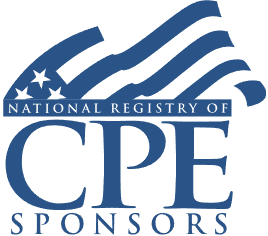State Corporate Income Apportionment: Key Fundamentals and Legislative Trends
Understanding State Approaches to Factor Weighting, Service Revenue, Key Apportionment Concepts

Course Details
- smart_display Format
On-Demand
- signal_cellular_alt Difficulty Level
Intermediate
- work Practice Area
Corporate Tax
- event Date
Thursday, March 26, 2020
- schedule Time
1:00 p.m. ET./10:00 a.m. PT
- timer Program Length
110 minutes
-
BARBRI is a NASBA CPE sponsor and this 110-minute webinar is accredited for 2.0 CPE credits.
This course will provide SALT practitioners working with multistate companies a review of key apportionment concepts, relevant court decisions, and new state laws and proposals.
Faculty

Mr. Reed chairs the firm's State and Local Tax Practice. He helps tax directors, business owners, and individuals manage state and local tax risks and exposure, including assessing the strength of corporate tax positions, evaluating whether charges are subject to sales tax, and representing taxpayers in disputes with revenue agencies throughout the U.S. He brings a practical, pragmatic approach to state and local taxation, one that takes into account reserve considerations, legal and administrative guidance, and anticipated revenue agency responses. He is particularly experienced with New York and Massachusetts tax controversies, corporate tax planning, assessing the anticipated state tax consequences of mergers and acquisitions, and analyzing the taxability of electronic commerce and emerging business models. He has resolved disputes with most tax agencies in the United States, and also has broad experience with IRS audits and appeals, and unclaimed property.

Mr. Shaikh is Armanino’s State and Local Tax (SALT) West Region practice leader. He advises clients on state and local tax matters related to administrative audits, corporate and personal income, property, sales and use, payroll and business licenses. While starting with a holistic approach to an organization’s multistate tax considerations, Mr. Shaikh also provides guidance with respect to individual jurisdictions. He has extensive experience before California taxing agencies, including the California Franchise Tax Board, the California State Department of Tax and Fee Administration and the California State Board of Equalization. A frequent author and speaker on SALT issues, Mr. Shaikh has published in numerous national tax publications and has been invited to speak for various associations. He has also been quoted by national publications including NPR’s Marketplace and Law 360.
Description
State tax sourcing and apportionment issues are growing in importance as many companies now have nexus with new states under state economic nexus laws. Avoiding sourcing the same receipt to multiple states is crucial to keeping state taxes manageable.
Tax professionals should have a basic understanding of how state tax apportionment rules work and should know the major differences between state approaches.
For those with a solid understanding of the basics, it is helpful to remain informed about new developments, including legislative and regulatory changes, and case law that impacts how current laws and regulations are applied.
Listen as our panel of experienced tax attorneys provides a summary of the essential concepts impacting state income tax apportionment and also identifies key trends and recent developments that tax professionals should know.
Outline
- Apportionment formulae key concepts
- Sales, payroll, and property factors
- Single-sales apportionment
- How market-based and cost-of-performance sourcing work
- Sourcing of sales of services
- Examples of throwback and throwout rules
- Apportionment issues for Sales of a Business
- Apportionment issues for Partnerships and Pass-through Entities
- Alternative apportionment
- Combined reporting apportionment issues
- Latest developments stemming from tax reform, state courts, and legislatures
- Recent legislative and judicial developments
Benefits
The panel will review these and other important topics:
- Apportionment formulae and the latest snapshot of single-sales states
- Cost-of-performance and market-based sourcing rules
- The impact of tax reform and considerations for apportionment methods
- States that employ throwback and throwout provisions--and what they mean for corporate taxpayers
NASBA Details
Learning Objectives
Upon completing this seminar, you will be able to:
- Identify apportionment formulae key concepts
- Distinguish between market-based and cost-of-performance sourcing work
- Recognize carryback and throwout rules
- Determine the impact of state court rulings on the multistate compact
- Field of Study: Taxes
- Level of Knowledge: Intermediate
- Advance Preparation: None
- Teaching Method: Seminar/Lecture
- Delivery Method: Group-Internet (via computer)
- Attendance Monitoring Method: Attendance is monitored electronically via a participant's PIN and through a series of attendance verification prompts displayed throughout the program
- Prerequisite: Three years+ business or public firm experience at mid-level within the organization, preparing complex tax forms and schedules; supervisory authority over other preparers/accountants. Specific knowledge and understanding of State Corporate Income Apportionment Fundamentals.

Strafford Publications, Inc. is registered with the National Association of State Boards of Accountancy (NASBA) as a sponsor of continuing professional education on the National Registry of CPE Sponsors. State boards of Accountancy have final authority on the acceptance of individual courses for CPE Credits. Complaints regarding registered sponsons may be submitted to NASBA through its website: www.nasbaregistry.org.
Unlimited access to premium CLE courses:
- Annual access
- Available live and on-demand
- Best for attorneys and legal professionals
Unlimited access to premium CPE courses.:
- Annual access
- Available live and on-demand
- Best for CPAs and tax professionals
Unlimited access to premium CLE, CPE, Professional Skills and Practice-Ready courses.:
- Annual access
- Available live and on-demand
- Best for legal, accounting, and tax professionals
Unlimited access to Professional Skills and Practice-Ready courses:
- Annual access
- Available on-demand
- Best for new attorneys
Related Courses

Mitigating Personal Holding Company (PHC) Tax for Franchisors and Closely Held Businesses
Thursday, June 26, 2025
1:00 p.m. ET./10:00 a.m. PT